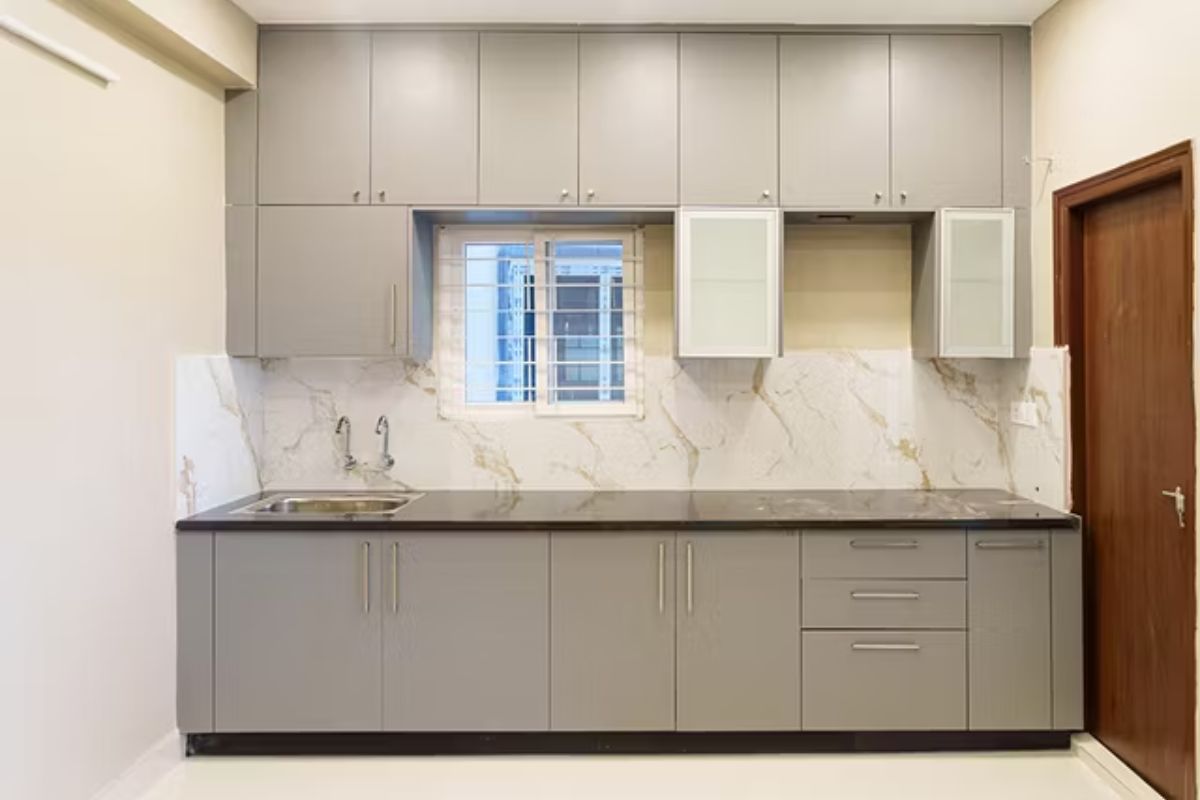Anatomy of Modular Kitchens: Key Systems & Smart Solutions

Today’s kitchen is no longer a space for cooking alone—it has become a part of home life. A well-designed kitchen reflects personal taste, suits daily routines, and adds character to the entire home. Of various designs that currently exist, modular kitchens stand out because of their fashionable look and space saving features. Modular kitchens are widely preferred by interior decorators in Chennai because of their balance of beauty and utility.
A modular kitchen consists of pre-drafted cabinet modules that fit together exactly. With the design, material, and finish flexibility, modular kitchens offer homeowners complete control over the appearance and functionality of their kitchen.
Why Modular Kitchens Are a Smart Choice
Choosing a modular kitchen is with some advantages:
Optimized space utilization
Contemporary, streamlined look
Easy and fast installation
Personalized choices for various requirements
Clean and tidy design
These kitchens help keep everything in its place, making cooking less disorganized and more attractive.
Key Components That Make a Difference
In order to understand what is efficient about modular kitchens, let’s break down their key components and systems.
1. Base Units
These are the base cabinets that generally store large pots, pans, and heavy cookware. Some base units also have built-in appliances like dishwashers or ovens.
2. Wall Units
Bolted to the counter, wall units store light products like cups, plates, and spices. Wall units prevent your counter from getting messy and make essentials accessible.
Wall units also differ in size and design. From standard hinged doors to lift-up systems, wall units add style and convenience to your area.
3. Tall Units
Tall cabinets are floor to ceiling and store things in the pantry or appliances like ovens and microwaves. They are ideal for taking advantage of vertical space without giving a bulky, non-built-in look to the kitchen.
4. Countertops
This is where most of the preparatory work takes place. Low-maintenance and heavy-duty materials like quartz or granite are common. The countertop needs to be heat-resistant, stain-resistant, and scratch-resistant—both functional and a design element in the kitchen.
5. The Work Triangle
A well-functioning kitchen design follows the work triangle concept—an invisible line between the stove, sink, and refrigerator. This minimizes travel, saves time, and makes the kitchen ergonomic.
Smart Storage Systems
Here’s how they make the most of every single inch:
1. Drawer Organizers
These are ideal for plates, cutlery, and cooking utensils. Dividers and trays within drawers keep everything in order and within quick reach.
2. Pull-Out Cabinets
Short and high, these slide-out units are ideal for spices, bottles, and small jars. They offer convenient access and utilize spaces that would be left empty.
3. Corner Solutions
Corners are pesky, but not in the modular kitchen. With swing trays and turntables, even the most pesky areas prove to be useful.
4. Overhead Storage
Tall wall cabinets make effective use of tall wall space. These are best for storing seasonal goods or non-daily used goods.
5. Pantry Pull-Outs
These tall sliding pantries consist of a number of trays or baskets and help keep groceries and dry foods organized in the right way.
Functional Zones for Efficiency
Modular kitchens are designed around functional zones, increasing workflow efficiency and reducing clutter.
Preparation Zone
This area houses the countertop area dedicated to food chopping and food preparation. It is placed ideally in between the range and the sink.
Cooking Zone
Having a stove, oven, and microwave, the area needs to be filled with all the utensils and ingredients for cooking within arm’s reach.
Cleaning Zone
The sink, dishwasher, and garbage cans belong here. With proper planning, this area is easy to clean and also well-ventilated.
Storage Zone
Everything from your dry storage to your small appliances and utensils comes in here. The way things are separated by function makes it easy to work.
Finish Options and Aesthetics
From wood finishes to laminates and matte lacquers, modular kitchens are limited by no design choice. You can opt for a handleless look for a minimalist design or add colour punches for a pop of colour. With so many choices, it’s no wonder that modular kitchens are considered part of the best interiors in Chennai.
Color, texture, and light are all important elements in the finished product. From crisp white minimalist to bold contrast, modular design enables you to personalize your kitchen more than ever.
Maintenance and Upgrades
One of the primary benefits of modular kitchens is how simple they are to care for. The finishes are stain-resistant and wipe clean quickly. When something on the cabinet or panel gets damaged, it can be replaced individually—no refacing the entire kitchen.
You also have the flexibility to renovate later on with soft-close drawers, sensor lighting, or new finishes. This will allow your kitchen to evolve with your life.
Final Thoughts
A modular kitchen is the best of form and function. It’s functional for every day’s cooking with a urbane, modern look. With smart zones, considerate storage, and quality finishes, it simplifies your cooking and enhances your home’s design.
When planning your new kitchen or renovating your existing one, think about this system-based strategy. It’s a long-term investment in style, comfort, and efficiency—a perfect solution for the fast-paced life of today.



